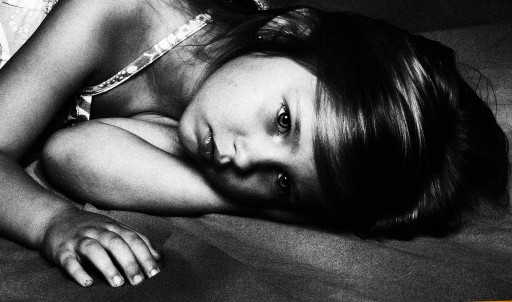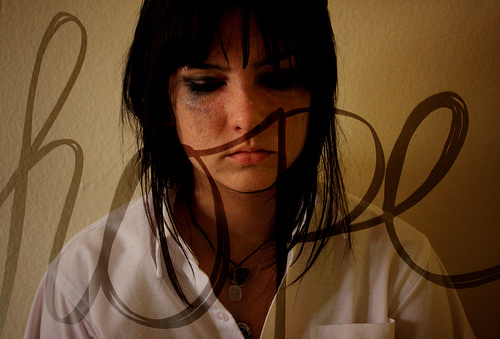 Over the last couple of years, I’ve laid awake at night asking myself uncomfortable questions about bullying and teen suicide. I don’t have answers to most of the questions that I have, but I’m choosing to voice my questions, fears, and doubts because I’m not confident that our war on bullying is taking us down the right path. I’m worried about the unintended consequences of our public discourse and I’m worried about the implications that our decisions have on youth, particularly in this high-stakes arena. So I’m asking these four tough questions in the hopes that we can collectively step back and think critically about how we’re addressing bullying as a public issue.
Over the last couple of years, I’ve laid awake at night asking myself uncomfortable questions about bullying and teen suicide. I don’t have answers to most of the questions that I have, but I’m choosing to voice my questions, fears, and doubts because I’m not confident that our war on bullying is taking us down the right path. I’m worried about the unintended consequences of our public discourse and I’m worried about the implications that our decisions have on youth, particularly in this high-stakes arena. So I’m asking these four tough questions in the hopes that we can collectively step back and think critically about how we’re addressing bullying as a public issue.
1. What if the stranger danger / sexual predator moral panic increased LGBT suicide?
When I was growing up online, talking to strangers allowed me to getting different perspectives on the world. As a queer teen, the internet allowed me to connect with people who helped me grapple with hard questions around sexuality. I very much thank the internet for playing a crucial role in helping me survive high school. In 2001/2, I visited the online forums that I grew up in, only to find that they were filled with hateful messages directed at LGBT youth by religious ideologues who, quite simply, told these kids they were going to hell. I learned that LGBT networks had gone underground.
As the sexual predator moral panic kicked in in 2005, youth started telling me about how all internet strangers were dangerous. They swallowed the message they’d been told, hook, line, and sinker. What really startled me were all of the LGBT youth I met who told me that they had no one to talk with… I’d ask them if they connected with other LGBT folks online and they’d look at me with horror before talking about how scary/sketchy/bad strangers were.
By many accounts, the early internet seems to be correlated with a decline in suicide among LGBT youth, perhaps because of its ability to connect LGBT to information and support structures. What if the stranger danger rhetoric undermines that? Who do LGBT youth turn to when they’re feeling isolated? Is it possible that the culture of fear we’ve created has increased suicide rates? If so, who’s responsible?
2. What if “It Gets Better” increases emotional devastation for some LGBT youth?
Most LGBT-identified teens who have committed suicide since the “It Gets Better” campaign have been involved in the campaign in some way. Jamey Rodemeyer notoriously made a video before he killed himself. Countless adults (and youth) have celebrated “It Gets Better” as a powerful message filled with hope. But “It Gets Better” isn’t the same as “I can make it better.” Abstraction and patience don’t help when you’re in pain Right Now.
When you’re 14 and coming to terms with your sexuality, six months feels like a decade and 4 years feels like eternity. Along comes a message of hope and it’s really exciting and you get pumped up, like the way you feel when a new song comes on the radio that you feel really speaks to you. You dive in, you create your story, you make your own video. And then what? The humdrums at school continue on and you continue to get teased, only worse this time because you publicly pronounced your story. You felt like you were part of a movement but no one reached out to you, no one helped you make it better. No community was made, no support group was developed. You’re still alone. No one seems to care. You crash and burn.
Getting “high” on a movement can be devastating for youth if there’s no support structure there when they fall. The Trevor Project did a great job of providing some of the needed support infrastructure, but communities themselves often aren’t prepared to support youth. Social services are underfunded. Schools are strapped for cash and getting rid of guidance structures. Parents are stressed out. Community groups are not always tolerant of questioning youth. Is it possible that hopeful messages like “It Gets Better” result in more devastating crashes, particularly for youth in not-so-supportive communities? Does the positive narrative outweigh the possible existential break that can come with being disappointed that things don’t get better?
3. What if the media spotlight around bullying causes harm to youth?
In January 2010, a Massachusetts-based girl named Phoebe Prince killed herself. The highly publicized story suggested that she was an innocent victim who was cruelly tormented by her peers. The story was told in such a cut-and-dry manner that it should’ve raised suspicions in anyone’s mind, but people glommed onto the narrative. Shortly later, the local District Attorney charged six students with various crimes in the case. But did they do what they were accused of doing or was this a witchhunt cloaked as justice? Those kids’ lives have been wrecked by the investigation, publicity, and charges. If they are the devils incarnate that the press want them to be, arguable they deserve it. But what if they didn’t? (If you want to read phenomenal coverage of this, check out Emily Bazelon’s 2010 feature series.)
In the summer of 1999, I was at a rave in a field in Colorado. I was in my tent, writing in my journal, when a group of kids asked me if they could come in. We got to talking and I learned that they had all been students at Columbine on that fateful day when the sanctity of their school was destroyed. I asked them about what it was like to be there and they said that it sucked, but nothing sucked more than the aftermath. They started telling me about how the press hounded them, how they couldn’t hang out with friends, how they had no place to go anymore because the press would sit on their lawns and beg them for more details. Paparazzi at its worst. The kids in my tent had all dropped out of school because of the press. WTF?
On one hand, it’s great that there’s public attention being given to bullying, suicide, and the hardships that youth face. On the other, I can’t help but wonder if the spotlight does additional damage. Does the spotlight help us find effective interventions or just force people to create bandaids? Does it increase justice or result in more kids’ lives being destroyed? Does it showcase the challenges that youth face or obscure them in caricatured forms that lose their nuance? In an effort to tell the story, do we create angels and demons that destroy any hope of creating change?
4. What if us adults are part of the problem?
I spend countless hours talking to youth, thinking about youth, and speaking out on behalf of youth. Nothing makes my heart ache more than seeing youth suffer. I can also still vividly remember my own experiences as a “weird” teen growing up in Pennsylvania who was regularly ostracized and teased. I remember what it was like to feel powerless and to reach that precarious state of anomie. I don’t want anyone to have to go through that which is why I’m so deeply committed to this struggle.
That said, I think that it’s outright dangerous to get so lost in our mission to combat bullying that we stop looking into the mirror. What are the norms that we set for young people when we talk poorly about our friends, family, neighbors, or colleagues at the dinner table? When we engage in road rage while driving? Why is it that we accept – if not encourage – meanness in our political sparring? Or on our TV talk shows? Why do marketers put their money behind reality TV shows that propagate the value of relationship drama as entertainment? Look around at the society we’ve created and it’s filled with harshness. To top it off, look at how much we pressure our youth, particularly middle class youth. Hyper-competition starts early and is non-stop. And look at how increased economic pressure in this country creates new tensions, particularly for working class youth. Then add in the fact that puberty is where all sorts of mental health issues start to appear. Where are the support structures for youth that go beyond the family? We’ve defunded social services left right and center.
In short, we’re creating a societal recipe for disaster even while we publicly pronounce our crusades to end bullying. We don’t need more pundits and journalists and politicians telling us we need to end bullying. We know that. We need to start building out the infrastructure to make it happen. And to realize that it’s a systems-level problem that is not easy to solve. There’s no silver bullet, no magical solution. It can’t be instantly stopped at the school door. It requires collective action, with an eye towards making the world a better place. It requires all-hands-on and a commitment from everyone – and I do mean everyone – to take responsibility for their own actions, values, and attitudes within society. Bullying doesn’t stop by blaming others. It doesn’t stop by creating new regulations. Or inventing new demons. Or scaring people shitless. It stops by collectively agreeing to engage in acts of tolerance, love, bravery, and respect. And that’s far harder to do than passing laws, prosecuting teens, or writing fear-mongering stories.
Image Credit: Ashley Rose


 We’re afraid of and afraid for teenagers. And nothing brings out this dualism more than discussions of how and when teens should be allowed to participate in public life.
We’re afraid of and afraid for teenagers. And nothing brings out this dualism more than discussions of how and when teens should be allowed to participate in public life.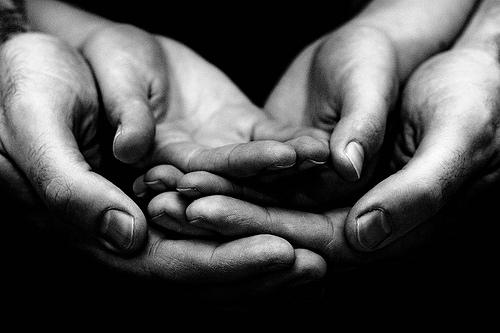 Two years ago, when I started working on issues related to human trafficking and technology, I was frustrated by how few people recognized the potential of technology to help address the commercial sexual exploitation of children. With the help of a few colleagues at Microsoft Research, I crafted
Two years ago, when I started working on issues related to human trafficking and technology, I was frustrated by how few people recognized the potential of technology to help address the commercial sexual exploitation of children. With the help of a few colleagues at Microsoft Research, I crafted 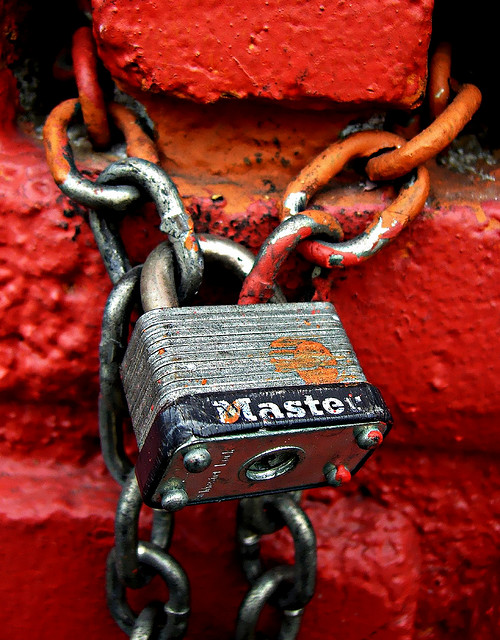
 Over the last couple of years, I’ve laid awake at night asking myself uncomfortable questions about bullying and teen suicide. I don’t have answers to most of the questions that I have, but I’m choosing to voice my questions, fears, and doubts because I’m not confident that our war on bullying is taking us down the right path. I’m worried about the unintended consequences of our public discourse and I’m worried about the implications that our decisions have on youth, particularly in this high-stakes arena. So I’m asking these four tough questions in the hopes that we can collectively step back and think critically about how we’re addressing bullying as a public issue.
Over the last couple of years, I’ve laid awake at night asking myself uncomfortable questions about bullying and teen suicide. I don’t have answers to most of the questions that I have, but I’m choosing to voice my questions, fears, and doubts because I’m not confident that our war on bullying is taking us down the right path. I’m worried about the unintended consequences of our public discourse and I’m worried about the implications that our decisions have on youth, particularly in this high-stakes arena. So I’m asking these four tough questions in the hopes that we can collectively step back and think critically about how we’re addressing bullying as a public issue. 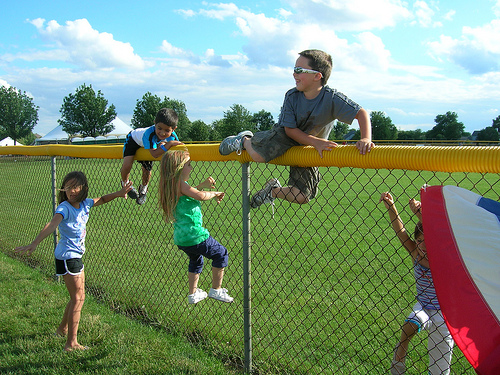 Announcing new journal article:
Announcing new journal article: 